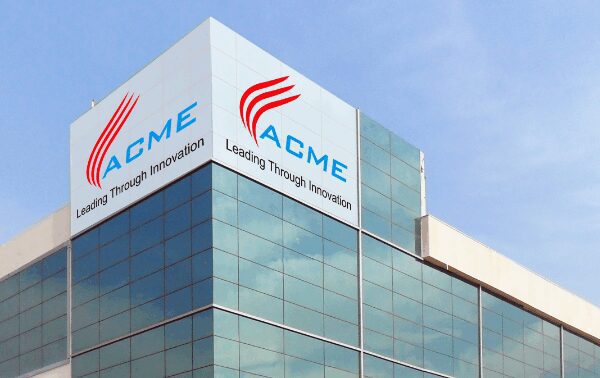

As one of the most influential events in the solar sector, Intersolar Europe offers a unique spotlight for innovation and development in the solar industry. The event’s annual Intersolar Award drew attention to some of the most compelling innovations in the sector, and from a pool of ten finalists, and Intersolar announced that its “international panel of judges” had selected three winners prior to this year’s event: Huawei, Aiko Solar and Wavelabs.
Huawei’s string inverter
The first of the three award winners is Huawei, whose SUN2000-330KTL string inverter aims to optimise solar farms by converting direct current to alternating current. The Chinese firm’s product can operate with a maximum input voltage of 1.5kV and produce 330kW of alternating current, and the Intersolar panellists noted their approval of this high production capacity. The inverter also boasts significant operational efficiency, with Huawei expecting an efficiency rating of 98.8% in Europe, and a maximum efficiency rating of 99%.
The inverter also boasts a number of flexible components, such as a self-cleaning fan, that can function with “all common solar panels,” according to Intersolar, and the versatile uses of the inverter could have been a contributing factor in the inverter’s receipt of the award. According to Huawei, the inverter can function at temperatures as high as 60 degrees Celsius, and at altitudes of up to 4,000m, furthering the product’s versatility across a range of environments.
Earlier this year, at the Huawei Partner Ecological Conference in Bangladesh, Huawei announced that it would implement the inverter in the Bangladeshi power grid, which has helped to demonstrate the practical efficacy of the technology. Bangladeshi newspaper the Daily Prothom Alo noted that the inverter’s potential induced degradation feature could improve the output of the solar panels in the Bangladesh grid by 5%, and the overall efficacy of the technology could cut the levelised cost of electricity to the grid by 6%.
“The smart and flexible inverter combines technologies that are based on artificial intelligence with modern, high-performance electronics; at a comparatively low price,” explained the Intersolar award panel.
Aiko Solar’s efficient modules
Another winner is Aiko Solar’s ABC modules, a series of solar cells which offer among some of the highest solar capacities in the world. The 72-cell white hole series offers the largest capacity, as high as 620W, and the highest delivery efficiency among the ABC series, of 24%. China’s Aiko Solar has also drawn attention to the long lifespans of the products, with a power attenuation rate of just 0.35% per year after the first, a figure shared across the four modules in the ABC series.
Aiko Solar first launched the cells in the third quarter of 2022, and brought them to Europe in the first quarter of this year. The products are also n-type cells, more powerful types of cells which tend to boast high capacities, but have endured higher capital costs as a result of this higher efficiency and efficacy. However, the Intersolar panel noted that the versatile function and form of the Aiko Solar products could help the company promote its panels to a wider audience.
“In addition to technical excellence, Aiko Solar’s new line features clean aesthetics and all-black variants, suiting a wide range of construction projects,” explained the Intersolar panellists. While Aiko solar initially planned to sell the ABC modules to commercial and industrial buyers, the efficacy of the panels means they could also be effectively used in distributed solar farms.
“The panel also praised Aiko Solar for metalising their ABC modules without using silver, which significantly reduces silver consumption and is therefore more environment-friendly.”
Wavelabs’ solar simulator
The final product to win the award is Wavelabs’ Sinus-360 Advanced simulator, which uses LEDs to simulate the rays of the sun, and test the function and efficacy of solar panels. With solar power an increasingly integral part of much of the world’s energy mix, ensuring operational efficiency is of great importance to many solar manufacturers. The German company’s simulator offers a great degree of specificity in its panel testing, with 27 LEDs that can be programmed and tuned independently of one another, to help mimic a range of solar conditions.
The lighting is also particularly flexible, as LEDs can be moved and aligned to test panels from a number of angles, allowing bifacial panels to be assessed, and ensuring the product can be used with a range of solar panels. The Intersolar panellists named HJT, Topcon and perovskite cells as types of solar panels that could be tested with the Wavelabs product.
The panel was particularly impressed with this flexibility, and noted that the simulator also offers infrared imaging, allowing panels to be tested with light beyond the spectrum visible to human workers. In their notes for the award, the Intersolar panellists drew attention to the fact that the lights can “reproduce the lighting conditions of almost anywhere on Earth in a spectrally stable manner.”
“Its modular design can also combine multiple analytical methods, such as electroluminescence and infrared inspection,” said the panellists. “The panel was most impressed with its light source being LEDs, its real-time light spectrum monitoring and the value creation across the entire supply chain.”
Innovative nominees
Beyond the winners, the panellists shortlisted a further seven products and solutions for attention, beginning with German firm Sunmaxx and its PV-thermal hybrid product PX-1. The PV modules boast a capacity of 395W, alongside thermal capacity of 1.5MW, at an efficiency of 60%, impressive figures for a solution that combines two distinct solar processes.
The award panellists noted that the PX-1 modules are capped at a heat of just 30 degrees Celsius, considerably lower than the heat produced by conventional PV modules, which can be as high as 65 degrees Celsius, making them safer to operate, and less likely to see considerable declines in operational efficiency over time.
Another impressive technological innovation was presented by Swiss company SmartHelio, which uses its AI program Autopilot to assess the efficiency and operational processes of a number of energy platforms, including solar power. The company’s program can be used to predict and identify a number of issues at PV operations, including detecting faults and suggesting countermeasures, and could be a key component in both the optimisation and automation of solar projects in the long-term.
Critically, SmartHelio has already worked with a number of industry leaders in the solar sector, demonstrating how its technology is already at a mature stage. One notable partner is Tata Solar, a leading Indian solar firm which will operate the 100MW NTPC Anantapur farm in Andhra Pradesh, which has expressed confidence in SmartHelio’s work, saying that it has helped in overcoming: “t[he] industry’s pressing issues like optimum cleaning cycles to minimise water usage and in-situ module degradation estimation for insurance claims.”
Tackling the supply chain
One of the nominated solutions which aims to tackle challenges faced by the entire solar supply chain is Taiwan’s TSGC Technologies. The company’s PV Circulator is a panel recycling machine, which can process one panel per minute, and boasts an annual capacity of 10,000 tons. TSGC’s work aims to create a truly circular economy in the solar industry. Its Circulator can process a panel with an energy cost of just 5kWh, helping to keep the energy requirements of the solar industry low across the sector.
Figures such as these are important, considering growing interest in solar panel recycling. The EU’s Waste Electric and Electronic Equipment recycling directive calls for 80% of a solar panel’s materials to be recycled, but the remainder of their components are not covered by legislation, and TSGC’s Circulator tackles this by recycling the entirety of each solar panel.
Meanwhile, Enphase’s IQ8 is a series of six module inverters that could be tied to energy grids, or function in off-grid environments. The flexibility of this approach – the Intersolar panel calls this the “first of its kinds on the market” – could be a key step in delivering reliable power considering the intermittent nature of the solar sector.
The smallest of these products, the “microinverter”, costs just US$166.50, and is one of five products which can be used in off-grid applications. The largest inverter, the IQ8H, has a peak power output of 366VA, and offers continuous output power of 360VA. All of these products can be used to provide emergency power to solar panels, again delivering reliable power.
Forms of photovoltaic
The final three nominated companies all cover innovative forms of PV. Based in China, DAH Solar’s PV modules are “full-screen” panels, which maximise their surface area to deliver significant capacity. These modules have an output as much as 460W, boasting an operational efficiency of 21.6%, and offer greater power generation compared to conventional PV modules of up to 15%.
German firm voestalpine received a nomination for its iFIX product, which consists of a single sheet of panels, rather than lots of separate modules. This framework, which is made of steel and best deployed on large, flat areas such as rooves, has been used in Austria and the Netherlands.
The final company to receive a nomination is Israel’s Apollo Power, which has developed solar panels known as SolarPaint. These panels are small and flexible, with an efficiency of 17%, and can be deployed on surfaces and in areas that would otherwise be unsuitable for solar installations. The Intersolar panel noted their potential use in floating PV, sidewalks and uneven rooves as a benefit of the approach.






